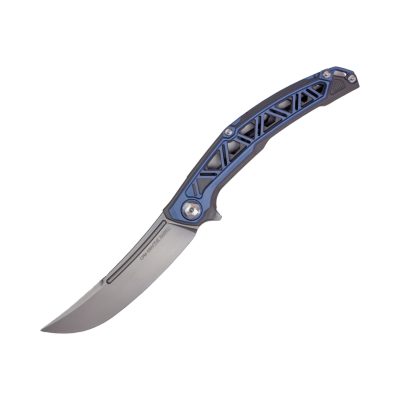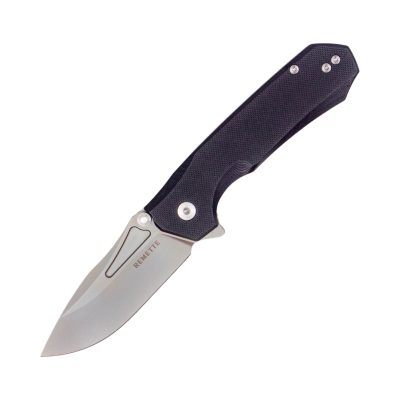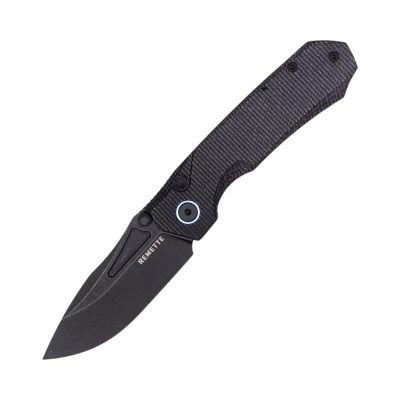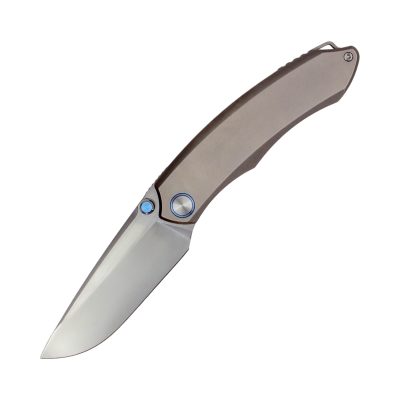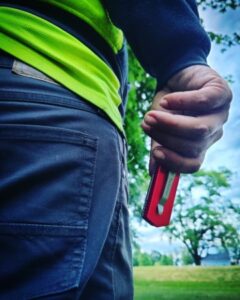Knives can hurt people. This is a truth acknowledged by even the staunchest knife advocates, and a whole field of technical terminology has sprouted up to describe the ways in which they can cause injury. For example, the Medscape article “Forensic Autopsy of Sharp Force Injuries” sorts such wounds into categories like puncture wounds (which are deeper than they are wide); incised wounds (which are usually longer than they are deep); and chop wounds (which combine elements of blunt-force trauma with those of sharp-force trauma). Each of these wound types carries its own unique characteristics. Chops can break bones. Incised wounds may leave subcutaneous tissues unaffected. And stab wounds never feature any bridging tissue that connects one end of the wound to another. Yet there’s one kind of injury not mentioned in this list, an injury that you’re just as likely to encounter — and one that has nothing to do with the sharp parts of a knife. That injury is repetitive strain injury.
In this article, we’ll talk about why knife use might lead to repetitive strain injury, the importance of handle ergonomics, and how to select a knife with a good grip.
Ergonomics and Injury: Why Handle Shapes Matter for Your Health
The average knife owner can use a bladed implement in many different ways, such as peeling a piece of fruit, opening one of those constantly appearing cardboard boxes from Amazon, or even defending yourself against an assailant. One thing these tasks have in common is that they’re typically all completed in short order. But instead of preparing a single mango or opening one package, imagine that you had to deal with a thousand of them. Suddenly, an inconsequential amount of strain on the musculoskeletal structures of your hand, wrist, and forearm has exponentially multiplied. The result? A potentially significant health risk.
Consider that for 2021-2022 (the most recent period for which data were available), the U.S. Bureau of Labor Statistics [direct link to file] reported a total of more than 2.2 million nonfatal occupational injuries that restricted employees’ job activities in some way, shape, or form. Out of those, over 80,000 involved “repetitive motions involving microtasks,” a category that would most certainly involve the kinds of motions used when wielding a knife. That’s not a massive number, but it isn’t insignificant when you consider that disruptions included loss of days at work, an involuntary restriction of job-related activities, and/or a transfer to a new position. That’s significant, and it can happen to you even if you don’t use a knife in your daily work.
How? There are two factors to consider: the shape of the hand and the shape of the knife handle. Simply put, when there’s a mismatch between the two, you run a risk of injury. Sometimes, these hurts might amount to little more than temporary discomfort. Over time, though, such small amounts of damage can add up.
How To Identify an Ergonomically Unsuitable Knife Handle
Let’s start with the first of the two factors involved in repetitive strain injury, namely the shape of the human hand. In fact, humor us while we ask you to conduct a practical experiment. Hold up a hand, any hand. Now stretch out your fingers, pushing them as far as you can from your palm, trying as best as you can to make the whole surface pancake flat.
O.K., that’s enough for now. Did you notice how, despite your best efforts, you couldn’t quite get your hand *perfectly* flat? There’s always some rounding near the joints of the fingers and curvature of the palm, no matter how slight. Any handle that you plan to hold for an extended period needs to acknowledge and conform to the natural topography of your hand. If it doesn’t, you’ll have to constantly adjust your grip as you work with it. Not only does this require more energy, it almost always causes discomfort. Even if you don’t end up with a break in the skin, a blister, or a bruise, you’ll likely feel more fatigued than you otherwise would with a better styled knife. Poor ergonomics does more than merely hurt you; they also rob you of productivity.
The best way to identify a knife with poor ergonomics is to examine it with an eye toward elements that will naturally clash with your grip — or anyone’s grip. Sharp angles, short handles, finger grooves, and unnaturally raised logos or texturing typically cause problems for users.
What To Look for in an Ergonomic Handle
Like many things in life, finding the good often proves more challenging than identifying the bad. An ergonomically attractive knife won’t likely grab your attention as dramatically as a handle that looks like something Dexter Morgan would use to coerce a confession out of some truly awful ne’er-do-well. It will present far more subtly. Still, there are a number of desirable handle characteristics that you can pick out fairly easily.
Our first characteristic is one that requires you to actually handle a knife. When you feel the way the handle meets your palm, you should very quickly gain some useful information about its ergonomics. One designed specifically to for lengthy use should rise slightly in the middle, back, and front, naturally fitting in the palm. If it doesn’t, you’ll be able to tacitly tell within a short period that it won’t work well with your grip.
Relatedly, areas that add focused pressure may facilitate repetitive strain injuries. This is another element that you can detect tactilely. Even with excellent design, no handle can fit every hand, and any points that press into bone or flesh will prove problematic.
An ergonomic blade has an acceptably long handle with an appropriate diameter. Like the prior point, this characteristic varies from person to person. There is no one handle length or diameter that will work with every hand, and yet ensuring you have a knife with good dimensions for both is paramount. Too short of a handle will mean that you can’t bring your hand’s full force to bear, and a diameter that’s too large or too small will also impact overall grip strength.
When considering a new knife, note whether or not the handle encourages finger compression when exerting force. Finger grooves may look as though they’ll help you hold on to a knife, they actually prevent the natural movement of your hand that contributes the vast majority of grip strength. No matter what you’re seizing, your fingers will tend to press against one another as you exert more pressure. Avoid any handle design that discourages this movement.
Finally, knives can become slippery with use. You may not find yourself using your blade to skin an elk or to defend yourself during a deluge (niche use cases, to be sure), but even simple tasks performed for an extended period may cause your palm to begin sweating. That’s a risk. An insecurely held knife is an injury waiting to happen. An ergonomic knife is one that features texturing or a handle material that helps you hold onto it.
Ergonomics matter to us here at TacKnives. Check out our selection!
Browse Our Folding Pocket Knives
-
Rated 5.00 out of 5$129.95 – $169.96Price range: $129.95 through $169.96Select options This product has multiple variants. The options may be chosen on the product page
-
Rated 5.00 out of 5Select options This product has multiple variants. The options may be chosen on the product page
$59.95Original price was: $59.95.$23.95Current price is: $23.95. -
Rated 5.00 out of 5Select options This product has multiple variants. The options may be chosen on the product page
$65.95Original price was: $65.95.$24.95Current price is: $24.95.


